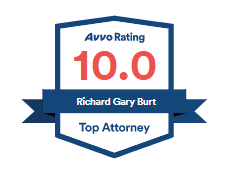In Hawran v. Hixson (2012), the court allowed a CFO who had resigned from a public company to sue the company and certain directors because the company’s press release implied that he had engaged in misconduct.
Sequenom was a publicly traded bio-tech company. Paul Hawran was its chief financial officer from April 2007 to his resignation in September 2009. In the spring of 2009, Sequenom publicly admitted that previously reported research and development results for a certain diagnostic test (referred to as the T21 test) were mishandled by employees on its science team. Thereafter, the company’s stock price declined, derivative and securities fraud lawsuits were filed, and the company commenced its own internal investigation, led by a special litigation committee. In June 2009, the company was alerted that the SEC had commenced an investigation into matters related to the T21 issue.
In September 2009, the defendants, who were members of the board of directors (and the special litigation committee), made Hawran an offer that if he resigned as chief financial officer, he would not be associated with the mishandling of the test data and would be separated from others involved in the test data mishandling. In reliance on those representations, Hawran resigned.
On September 28, 2009, the company filed a Form 8-K and concurrently issued a press release announcing the completion of the special litigation committee’s independent investigation. In part, the press release stated the company had failed to put in place adequate protocols and control for the conduct of studies related to the program, and it stated that the board of directors had begun to implement various remedial measures.
The press release continued:
The company has terminated the employment of its president and chief executive officer … and its senior vice president of research and development … effective immediately. … The company has obtained the resignation of its chief financial officer, Paul Hawran, and one other officer. While each of these officers and employees has denied wrongdoing, the special committee’s investigation has raised serious concerns, resulting in a loss of confidence by the independent members of the company’s board of directors in the personnel involved.
According to the court, to an average person reading the entirety of the press release, the damaging implication was apparent: the company sought and obtained Hawran’s resignation because Hawran was among the group of officers and employees somehow responsible for the deficiencies of the T21 program and the failed company procedures. The statements insinuated that the company possessed undisclosed facts concerning what Hawran actually did (or did not do) at the company that implicated him in the wrongdoing.
Hawran sued the company and three members of the board of directors, alleging that he had previously raised objections about board compensation and actions of the audit committee and that the company used the T21 test mishandling to constructively discharge him for his prior complaints. He also alleged that the press release irreparably damaged his professional reputation and impaired his ability to earn a living by falsely stating that he had denied any wrongdoing, blaming him for the data mishandling, and calling into question his ethics, management capabilities, and performance as the company’s CFO.
The trial court granted the defendants’ special motion to strike part of Hawran’s first amended complaint as a strategic lawsuit against public participation under Code of Civil Procedure § 425.16 (a SLAPP-suit motion).
The court of appeal held that Hawran did not meet his burden to show his causes of action fell within the “commercial speech” exemption to avoid a SLAPP-suit motion, but the rest of the appellate court’s rulings were favorable to Hawran.
The defendants contended that the press release was absolutely privileged as a fair and true report of an official proceeding made to a public journal. Assuming (but not deciding) that a press release made to a PR newswire and other news outlets was a report to a “public journal,” the court held that the press release did not constitute a report “of” the SEC investigation or a report “of anything said in the course of” the SEC investigation. Indeed, the press release did not mention the SEC investigation, much less report its substance.
Although the press release contained information similar to that contained in the Form 8-K filed with the SEC, a Form 8-K is not itself an official proceeding. The fact that information in the press release was also disclosed to the SEC in a legally required Form 8-K did not transform the press release into a report about an SEC proceeding.
The court also concluded that the press release did not qualify for protection under the “official proceeding” privilege, which confers an absolute privilege to communications made as part of a “judicial or quasi-judicial proceeding.” The official proceeding privilege extends to communications intended to report wrongdoing or trigger an investigation, but the aim of the communication must be to further the object of the official proceeding. The statements made in the press release had no functional connection to the SEC’s investigation. The press release provided information to the public at large as a supplement to the company’s regulatory disclosures. The court saw no reason to extend the official proceeding privilege to statements made in a press release that are merely related to the Form 8-K, which itself is “one step removed” from an official proceeding.
The defendants also argued that the press release was privileged under the “common interest” privilege, which provides a privilege against defamation for statements made without malice where the writer and the reader have a common interest and the communication is of a kind reasonably calculated to further that interest. Here the press release was disseminated to the PR Newswire, a wire service distribution vehicle, and, from there, the world at large via numerous Internet sources, well beyond the “investing public” or those having a proprietary interest in the subject matter.
The court held that Hawran would be permitted to proceed with his causes of action for defamation, invasion of privacy, unfair business practices, and breach of contract.
Comment
Had the company disseminated the information the press release solely to shareholders in a letter to shareholders (and not via press release), the “common interest” privilege might have protected the defendants from a defamation claim unless the plaintiff were able to prove malice. Such limited dissemination raises issues of differential disclosure, however, which can create liability under the securities laws.
Although the press release was issued by the company, and thus a corporate act, and although directors are not normally liable for a corporate act, the general rule for defamation claims is that one who takes a “responsible part” in the publication of the defamatory material is liable for the defamation. Here Hawran alleged that the defendant directors took a responsible part in the publication of the press release. That was supported by a declaration of the director of investor relations that the defendants themselves submitted. That declaration stated that the release was “formulated” by the board of directors.
Had the press release distinguished Hawran’s termination from that of the other officers, or had the termination of Hawran been reported in a separate press release, the defamation claim might have been defeated entirely.




